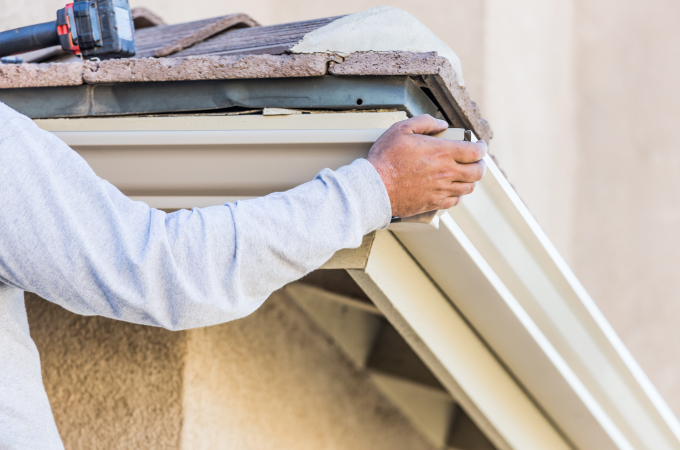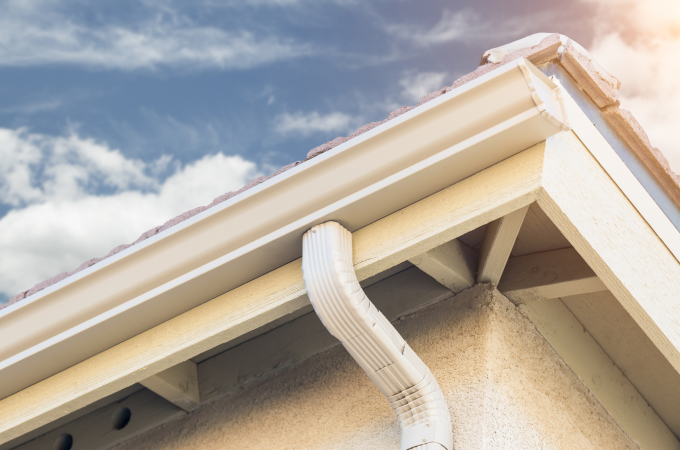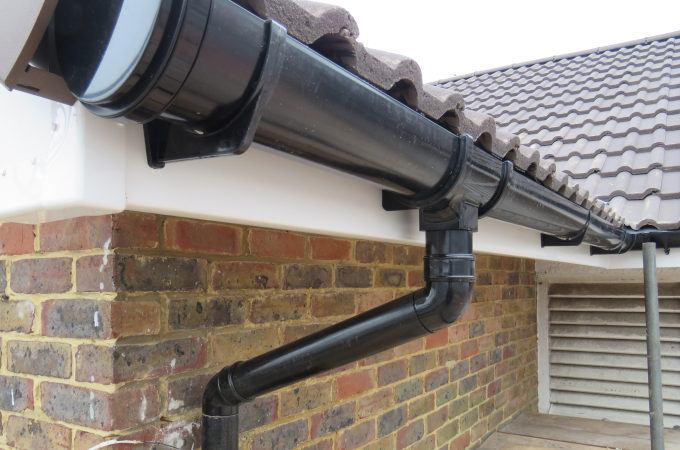There’s a lot that goes into gutter installation, so it’s critical to choose the right materials, the right size, and the right accessories to get the most bang for your buck. Below, you can learn more about gutter hangers and the role they play in protecting your home and property from the potential destruction of heavy rainfall. They may seem insignificant, but they are actually one of the most important parts of your system.
What is a Gutter Hanger?
A gutter hanger is a piece of material – often aluminum, steel, or copper – used to attach lengths of gutter to your home. Though they most commonly attach to the fascia, which is the outer band under the edge of your roof, some applications and installations are a bit different depending on the architecture of your home. Gutter hangers must be installed according to industry standards to properly support the gutter system, even when filled with water. For example, a standard installation calls for a gutter hanger every 24 to 36 inches (two feet), whereas installation in a colder climate prone to wintry precipitation may require a hanger every 12 to 24 inches for additional support.
Types of Gutter Hangers
Like gutters themselves, gutter hangers come in a wide range of sizes, styles, and materials to suit your needs. These include half-round and K-style hangers and shanks, as well as ornamental hangers designed to provide some eye appeal. Materials include steel, copper, galvalume, aluminum, vinyl, and more to match the type of gutter material you have chosen. Most hangers are available in 5,” and 6” sizes, and a few come in 7” to 8” sizes, as well.
Within each material choice, you can find options like mini, mighty, T-bar, quick screw, and wrap-around hangers, among others. Though they all serve the same purpose – holding your gutter securely to your home – they do so in a different manner. For example, a wrap-around hanger wraps all the way around the gutter to keep it secure, whereas a standard heavy-duty hanger supports the gutter from below it.
What Happens when Gutter Hangers Fail?
When a gutter system is filled with water, snow, or ice, it becomes increasingly heavy. That weight pulls on the home’s fascia, but when gutter hangers are installed properly, the pull is evenly distributed, and the fascia has no problem providing the necessary support. However, when only one gutter hanger fails, it puts pressure on those nearby. Over time, those become weaker and weaker and can eventually fail, too. What’s more, gutter hangers typically fail at the point where they are attached to the fascia. This means that the hanger may take part of the fascia with it when it fails, causing a great deal of expensive damage.
Gutter hangers may be small and seemingly insignificant, but the truth is they provide all the support for your entire gutter system – especially when it is filled with water, snow, or ice. To prevent expensive damage, homeowners can quickly scan their gutter systems now and then to look for various signs of failing hangers, including broken hangers, sagging gutters, and split fascia.
 Contractors
Contractors




Absolutely correct